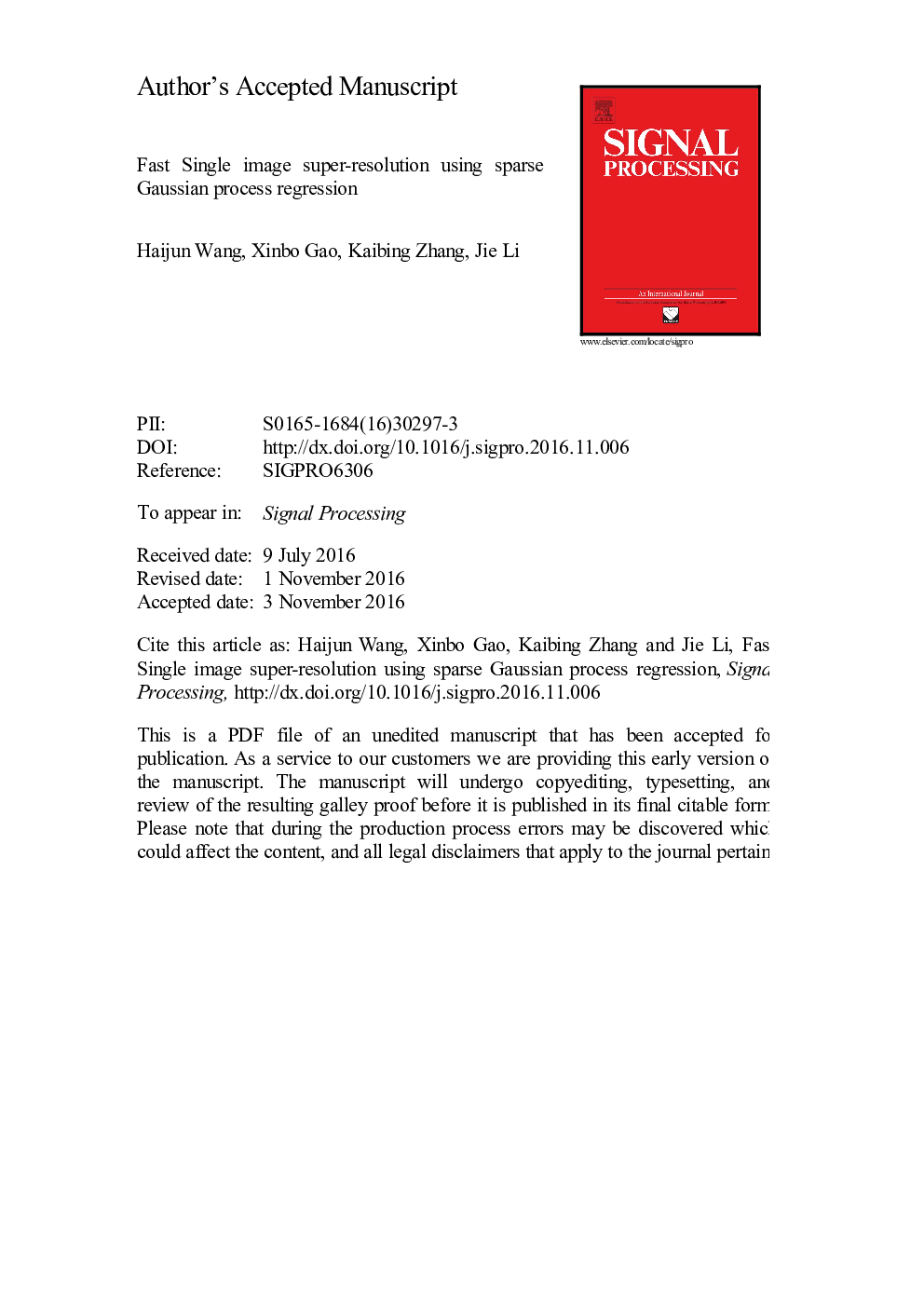| Article ID | Journal | Published Year | Pages | File Type |
|---|---|---|---|---|
| 4977737 | Signal Processing | 2017 | 30 Pages |
Abstract
Gaussian process (GP) regression is a popular statistical kernel method for learning the relationship hidden in data. However, the extensive calculation of kernel matrix hinders the further applications in many computer vision tasks such as super-resolution (SR). While active-sampling using active learning can extract a small informative subset from a large training set to overcome the bottleneck of GP regression based SR, there is still room for improving the SR quality as well as efficiency. In this paper, we target a nearly real-time GP-based SR, termed as SpGPR, by integrating the active-sampling and traditional sparse GP. The proposed framework is based on the statistics that the model projection vector is approximately sparse. To be more specific, we first train a full GP model based on an informative subset obtained by active sampling from the original training dataset. And then we propose to employ the sparse GP to further approximate the full GP model by seeking a sparse projection vector, which can significantly accelerate the prediction efficiency while getting higher reconstruction quality. The proposed method is fundamentally coarse-to-fine. Extensive experimental results indicate that the proposed method is superior to other state-of-art competitors and is promising for real-time SR application.
Related Topics
Physical Sciences and Engineering
Computer Science
Signal Processing
Authors
Haijun Wang, Xinbo Gao, Kaibing Zhang, Jie Li,
